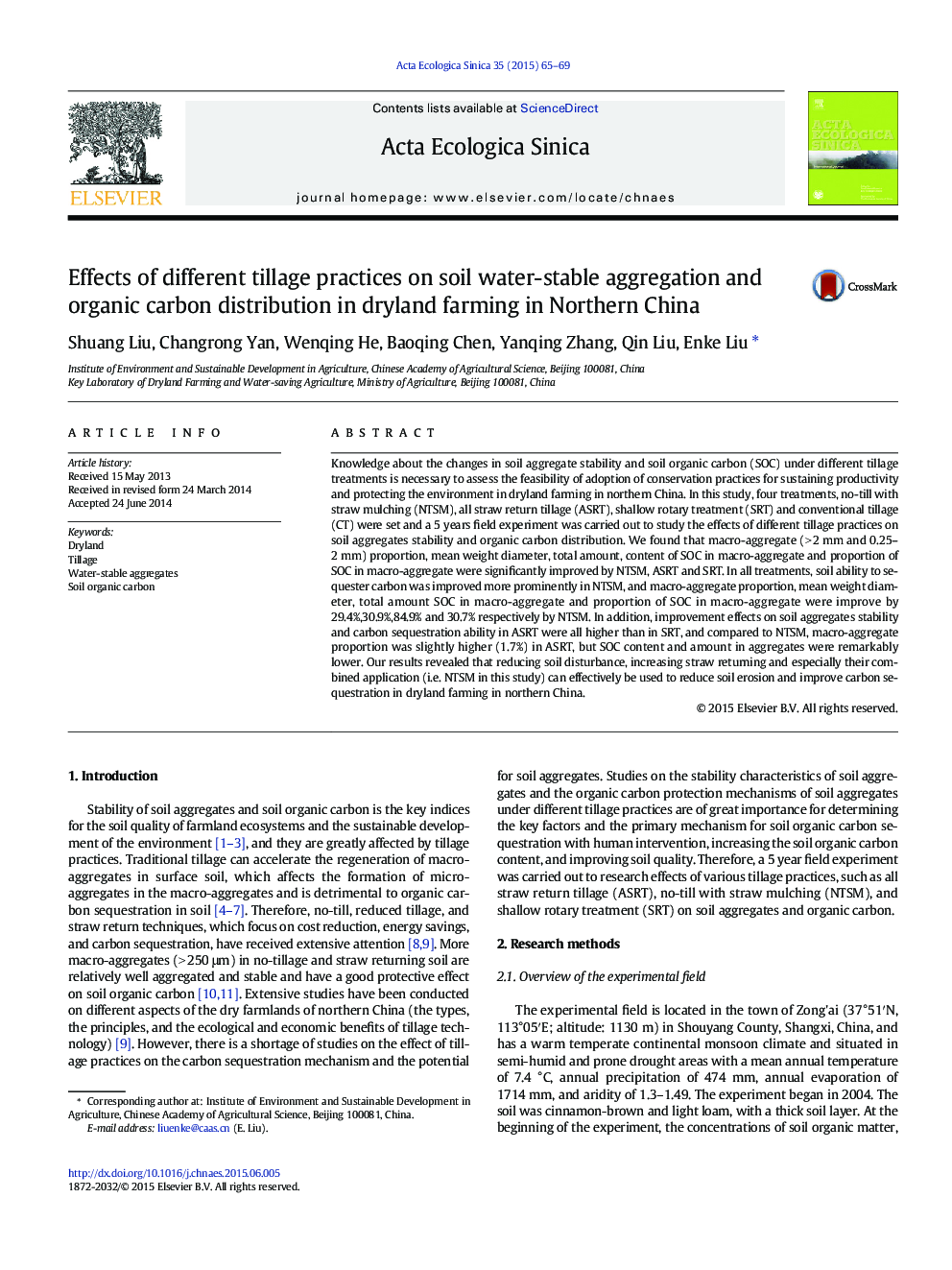| Article ID | Journal | Published Year | Pages | File Type |
|---|---|---|---|---|
| 4379879 | Acta Ecologica Sinica | 2015 | 5 Pages |
Knowledge about the changes in soil aggregate stability and soil organic carbon (SOC) under different tillage treatments is necessary to assess the feasibility of adoption of conservation practices for sustaining productivity and protecting the environment in dryland farming in northern China. In this study, four treatments, no-till with straw mulching (NTSM), all straw return tillage (ASRT), shallow rotary treatment (SRT) and conventional tillage (CT) were set and a 5 years field experiment was carried out to study the effects of different tillage practices on soil aggregates stability and organic carbon distribution. We found that macro-aggregate (> 2 mm and 0.25–2 mm) proportion, mean weight diameter, total amount, content of SOC in macro-aggregate and proportion of SOC in macro-aggregate were significantly improved by NTSM, ASRT and SRT. In all treatments, soil ability to sequester carbon was improved more prominently in NTSM, and macro-aggregate proportion, mean weight diameter, total amount SOC in macro-aggregate and proportion of SOC in macro-aggregate were improve by 29.4%,30.9%,84.9% and 30.7% respectively by NTSM. In addition, improvement effects on soil aggregates stability and carbon sequestration ability in ASRT were all higher than in SRT, and compared to NTSM, macro-aggregate proportion was slightly higher (1.7%) in ASRT, but SOC content and amount in aggregates were remarkably lower. Our results revealed that reducing soil disturbance, increasing straw returning and especially their combined application (i.e. NTSM in this study) can effectively be used to reduce soil erosion and improve carbon sequestration in dryland farming in northern China.
